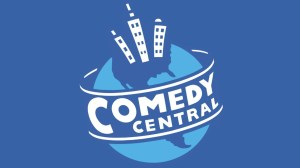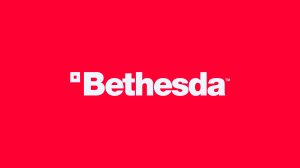Starting tomorrow, Warner Bros. will work with Fathom Events and AMC Theatres to present a three-day, 30th-anniversary celebration for Teenage Mutant Ninja Turtles. Director Steve Barron’s 1990 film, which he made with writer Bobby Herbeck, producer Kim Dawson, and (among others) the Jim Henson Creature Shop, has aged fairly well, in terms of its look and feel, even if some of the dialogue and pop culture references feel pretty dated. Yesterday, we shared a snippet of a conversation in which the pair said that they hoped to pitch a follow-up to studios, but that’s not all they had to say about the film, which was one of 1990’s highest-grossing films and went on to be a massive success on VHS in the rental market.
Videos by ComicBook.com
This Thursday through Saturday (November 6-8), Fathom Events and Warner Bros. are bringing Teenage Mutant Ninja Turtles back to select theaters. You can get more details on the event at the Fathom Events website.
Herbeck and Dawson joined ComicBook.com to talk about the film’s legacy, what they would change if they had a “redo,” and the upcoming anniversary screenings.
ComicBook.com: We’re like seven movies deep and it’s been 30 years, but I think that most people would not argue that this is the best looking of the Turtles movies that has been made. Obviously at the time it seemed incredibly daunting. Did it make you guys’ life a little easier when you realized, “oh, we’re going to be able to lean into having Jim Henson Creature shop help us along with this?”
Bobby Herbeck: Well, absolutely.
Kim Dawson: From my point of view, that was the key factor. The truth is that Kevin [Eastman] and Peter [Laird] had veto power over, not the script, but rather over the costumes, because they basically said, “If the costumes aren’t right, it won’t work.” So when Jim came on board and brought the Creature shop on board.
Jim, wasn’t a big fan at the beginning; it took both his son Brian Henson, and Steve Barron to convince Jim that this was a really good idea. But when Jim and the Creature Shop, which was kind of run by Brian in London, came on board, it gave it a whole new characterization.
Frankly, Jim didn’t like to travel a great deal. He had an office in Orlando at Disney MGM studios because he was licensing The Muppets to MGM. He lived in New York and he would commute there and back, and then to London. But going to Hong Kong, which is where Golden Harvest wanted to make the movie, was not going to work. It was a deal killer.
So when he signed on, he said, “Let’s find a place on the east coast that’s convenient for us.” That’s how they ended up in North Carolina, at the studios in Wilmington. But it was really when he came on board and Peter and Kevin signed off, and we were all aligned with the look of the costumes that it really became alive.
Bobby was in the midst of writing by then. So that was a different element. But the costumes were key critical to actually the success ultimately, in my opinion.
Herbeck:
I always say, on the night it opened, I went, I was bouncing around theaters in LA, and I was in Westwood. I remember seeing the kids sit on the edge of their seats literally, leaning forward just dying to see what they looked like, because, “What did they come up with? What were they going to look like?”
I’ve always said, and Kim sort of, too many times, I always said, that Steve Barron was so brilliant. I love the tease he did at the beginning, when that manhole cover moves and Raph looks out and then it drops. It’s like, Whoa. Then they cut to credits and you hear them coming down the sewer and you see the … There are shadows on the wall and then they come into view. I just thought that whole presentation was brilliant, because when the kids saw them in that sewer from head to toe, they all just reacted to it, you know. They were all cheering and stuff.
I get goosebumps reliving it. I thought, how cool is that? It’s pretty cool to write a movie and/or be in a movie. The first time I saw myself in a movie, I literally slid on the floor and hid my eyes because to see yourself that big on the screen is a very frightening thing for me. Then, to go and write a movie and then be in London where I was with Steve Barron — he wanted me there writing it, and Tom Gray. Then I would go over to the Creature Shop from time to time and Jim Henson would take me in and just watching him go from little clay models and just evolve, morph into these costumes. It was an incredible adventure. A great, great thing for me to be part of. It inspires your writing when you see this.
ComicBook.com: I think that when you’re doing something that’s really trendy in the moment, it’s hard to picture us talking about this 30 years. Is there anything that you guys would have done different if you had realized like, “hey, that Moonlighting reference won’t make sense the two thirds of our audience in 10 years?”
Herbeck: No. I would have done nothing different, other than…Kim just heard this, we just said this to a guy earlier, I’d have made sure I got sequel rights and a producer credit, that’s the only thing I’d change. I mean that, because Tom Gray took me to Massachusetts to meet Peter and Kevin, and said, “We got to sell them that we’re the company to make the movie.” Well, that’s the job of a producer! And the rest is history. But would I change anything? I think you’d always say something.
In the sequel I wanted them to see them driving a little bit, a vehicle and stuff and doing some tricky things with ATVs and stuff. But I wasn’t in that mix. But no. I’ll shut up, but the only thing I never liked in the movie and when I saw the rough cut at Goldwyn, and when it was over, Tom said, “What’d you think?” I said, “I love everything, but you’re not going to leave that cheesy scene in with the puppets where they go ‘pizza!’”
He says, “Oh, we’re going to change that Herbs.” Then we get to the premiere, and I see the movie and go and looked at him afterwards and said, “You didn’t change that scene.” That’s so cheesy! But people love it. They loved that scene. They think it’s campy, but it was just so obviously puppets, almost on a string. It was like Howdy Doody, you know? But that would be the only thing I would’ve changed. I’d have shot that different.
ComicBook.com: Now that we’re in this weird era where we’re getting like the Halloween and Bill and Ted and everything, 20, 30 years later sequels. If somebody came to you and said, “Hey, we want to do something with this version of the universe — ?”
Herbeck: Yes. The answer is yes. We’re trying to make that happen. We want to do a reboot. We got our fans come to us on Instagram, they’re, “Why don’t you guys do a reboot of the first movie?” We’d love to do it.
ComicBook.com: Is that one of those things where you kind of think almost like Evil Dead, where you think you could have two different continuities and not lose people?
Herbeck: Yeah. I mean, Kim, step up! [Laughs]
Dawson: The truth is, this property, it’s established now after 30 years as a part of our modern pop culture; it’s not going away. It’s only going to continue to grow. I just wish that we could go back. I mean, we’ve talked to Steve Barron about this, and Brian Henson, and if there were an opportunity, if one of the studios saw fit, I think we could go back and redo the first picture, reboot it like it was.
Whether it was just using modern technology, imagine if Brian Henson had access to the technology he does today to make these costumes and all that. I think it would be amazing. A reboot like that I think would really get people’s juices flowing.
I’m sure to Seth Rogen’s new animated picture is going to be well-received because it’s going to target kids. It’s a Nickelodeon Picture, as opposed to Michael Bay’s Transformers-like things. I honestly don’t know what’s happening with that picture.
Herbeck: I’ve talked to them, they’re not saying.
ComicBook.com: Do you think that these frequent reboots are a sign that maybe this is a property that always appeals to kids of a certain age, and every few years you’re going to need to reinvent it?
Herbeck: I’ve been asked many times, even in a recent French interview for French TV, some program. They asked what I thought, and I said, “Not much.” I echoed Kevin Eastman. I was with him for lunch last year, and asked him about what he thought of what Michael Bay’s take on them, and he didn’t like it. He had a conversation with Michael about it. Michael Bay basically told him that it was too bad that he didn’t like them. I’m paraphrasing now.
I always say, they became an icon. Like Kim said, it became part of the social fabric. But no one changed Superman, Spider-Man, Wonder Woman. Maybe a subtle change over all those years, but not the drastic change that Michael Bay came up with. I just don’t think you’d do that. You know?
I get that from people. I get people, “How come you change the Turtles?” I said, “I had nothing to do with it.” My own grandson asked me, he said, “Why would you make them look so scary, Pop?” I said, “I have nothing to do with this one. This is some other people.” Everybody wants us to go back and do the original Turtles. Kim and I are going to try to get that done. We’re doing a documentary, but we’re also going to try to see if we can sell somebody on doing a reboot.
ComicBook.com: You both have fairly long, storied careers, but thirty years later people ask you about this movie every day. Is that a little surreal to kind of have that one thing that people laser-focused on so much in your career?
Herbeck: It’s not surreal, it’s great. Everybody dreams to have a hit picture that made such an impact on people and continues to do that, people come up to you and go, “Man…!”
Major League Baseball players, Justin Turner, Cameron Maybin, will come up to me and say, “Do you know how that movie changed my life, dude?” It’s just amazing the positive response to Ninja Turtles from talking about the first picture. Yeah, I can’t hear it enough. It’s great. Kim and I say it, we’re blessed everyday. 30 years ago, we’d have never said we’re going to be here having to celebrate this….Well we didn’t get to celebrate because the COVID, but I never thought this would go 30 years.
They said it was a one-trick pony, and the critics beat the hell out of that picture. They said it was a piece of crap, another Howard the Duck, you know. But the critics, once again are proven wrong. It’s about who goes to see it. So the rest is history.








